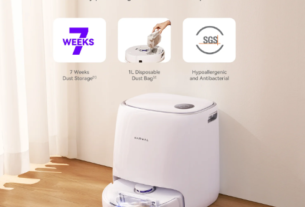Businesses of all sizes face growing pressure to operate efficiently while protecting the assets that comprise their premises and assets in today’s rapidly developing business world. As technology evolves, organizations look for creative solutions to streamline operations while safeguarding assets – one such gaining popularity is the smart lock management system which offers modernized access control and security, revolutionizing how businesses oversee their facilities.
Streamlined Access Control
Smart lock management systems present businesses with a modernized solution to access control, greatly streamlining it for administrators. Their ability to grant and revoke permission remotely means administrators can manage employee permissions effectively from anywhere with internet connectivity – eliminating physical keys or frequent code updates while streamlining administrative tasks and decreasing risks of unauthorized entry. Employees appreciate using smartphones or RFID cards for entry as this offers convenience while upholding security standards.
Integration With Office Systems
Smart lock systems offer many benefits when integrated seamlessly with existing office infrastructure, from attendance tracking, building management, and human resource platforms, all the way through to smart locks themselves. Smart locks create a unified ecosystem within the workplace – for instance by automatically updating employee access permissions according to predetermined schedules or roles, eliminating manual updates while simultaneously decreasing administrative overhead costs – this integration optimizes workflow processes as it ensures a smooth transition to more technologically advanced access control solutions.
Enhanced Security Measures
Smart lock management systems feature sophisticated security measures designed to safeguard business premises and assets. These systems use encrypted communication protocols and biometric authentication techniques to provide multiple levels of protection against unauthorized entry attempts. Utilizing sophisticated security measures, businesses can significantly lower their risks associated with security breaches and unauthorized entry. Smart lock systems feature real-time monitoring capabilities that enable administrators to easily keep an eye on access events and receive instantaneous notifications of any suspicious activities that might emerge, giving them time and opportunities to quickly respond and mitigate security threats before they aggravate, protecting employees as well as assets in their facility.
Operational Efficiency
Smart locks not only enhance security in the workplace but are also indispensable tools in improving operational efficiency lowering downtime and increasing productivity. By streamlining access processes and eliminating physical keys from access points, smart lock systems decrease downtime while increasing productivity and decreasing downtime. Employees no longer need to wait around for someone else to open doors or search for misplaced keys – they can quickly and securely gain entry via their preferred authentication method, whether that be a smartphone, RFID card, or any other.
Employees benefit from seamless access experiences provided by smart lock systems as they can focus on their tasks without interruption and remain productive, ultimately driving efficiency and productivity. Furthermore, smart locks include audit trails to give an in-depth analysis of access patterns and usage. Businesses can utilize this data to pinpoint areas for optimization in workflow efficiency as well as implement targeted measures designed to streamline operational processes.
Challenges and Considerations
Smart lock systems present many benefits to businesses; however, organizations must address certain considerations during implementation to ensure successful results. One primary consideration involves compatibility issues between smart lock systems and existing infrastructure and legacy systems, thus minimizing disruption and impact on ongoing operations. Furthermore, employee training plays a key role in successfully deploying them; employees need adequate knowledge on how to utilize this new technology effectively and safely to maximize its benefits while mitigating risks associated with its usage.
Businesses face additional data privacy considerations associated with collecting and storing access data. Compliance with relevant regulations and standards is necessary to protect sensitive customer information while upholding customer trust; but businesses can overcome such challenges through careful planning, collaboration with knowledgeable providers, ongoing training initiatives, or education campaigns.
Future Trends and Innovations
Smart lock technology promises businesses seeking to optimize their operations exciting prospects for growth. Innovations like artificial intelligence-powered access control systems, predictive analytics for security risk assessment, and blockchain authentication systems promise to transform workplace security as we know it today. By keeping abreast of emerging trends and capitalizing on advances made possible through smart locks technology businesses can stay one step ahead and remain at an advantage in gaining an advantage against their competition.
Conclusion
Smart lock management systems play a pivotal role in optimizing workplace operations by strengthening security, streamlining access control, and driving productivity. Integrating smart locks into business environments creates a safe working environment where employees feel safe to work efficiently while productivity flourishes. Businesses today continue prioritizing efficiency and security over profitability in an ever-increasing digital sphere; smart lock technology remains invaluable as an asset toward fulfilling this aim.




